Notes From a Graveyard
by Thomas Goodrich
Note #1
DESPITE ITS Italian-sounding name, Antonino is an old German community. At the close of the 19th century these thrifty, industrious immigrants flocked to the High Plains around Hays, Kansas, and established their own communities. When I lived here in 1970, I still recall German being spoken in the supermarkets.
In 2009, I found myself once more living in Hays. For exercise, I generally biked to Antonino every day. One way is maybe eight or ten miles but when I got a gorgeous day (often) and when the wind was behavin’ (seldom), and when those two came together, I didn’t complain one bit. Just west of Antonino is the community cemetery. Here I stopped, opened the little gate, then rested and watered in the shade of a large statue depicting the crucifixion. Like the blood of Jesus above, the sweat of Mike below dropped down to the bricks at his feet.
Perched on a gentle slope above the Smoky Hill River valley, this cemetery is a large one, I judge, surrounded on one side by a fancy wrought iron fence and on the others by the ubiquitous post rocks (top picture, limestone posts cut from the earth to make up for the lack of wood on the plains). But it did seem odd. In that large plot of land — maybe 3-4 acres — only a hundred or so souls rest in peace, and these in the middle, taking up only a fraction of the space. Obviously, the city fathers long ago looked to a day when Antonino would be a booming, bustling hive of industry, commerce and agriculture with plenty of dead folks to fill the plots. But that day never came. Barely a crossroads today, no more than a score of souls call the village home. The dead easily outnumber the living.
Sauer . . . Klaus . . . Pfanenstiel . . . Reichert . . . Wasinger . . . Keberlein . . . Munsch . . . the names on these New World stones trace back to the earliest beginnings of the Old World. Touchingly, separated from the adults, a children’s cemetery. The two dozen markers here, many made of metal, appear to be done by hand, as if it were the last loving act a heart-broken father could perform for his child.
The plain surrounding the cemetery is almost treeless. I walked about this wind-swept ridge, looking at the markers, avoiding the little cacti that refuse to die after a thousand mowings. Chewing on some buffalo grass that grows here reminded me of oats. A flock of small birds passed high overhead. I had forgotten that wonderful whooshing sound so many working wings make.
Some of the stones have little round photos of the deceased.
Dale F. Rohr, November 19, 1948–June 5, 1969. . . . Dark suit . . . thin black tie . . . innocent looks . . . his high school graduation photo. One year younger than me, we look nothing alike . . . but then again we do. A car wreck? A farm accident? Viet-nam?
An ambulance soon speeds by on the lonely little highway in front of the cemetery, lights flashing but siren silent. The irony.
***
Note #2
As I sit and catch my breath, sweat boiling down, I rest my eyes for the hundredth time on the sun-splashed Smoky Valley to the south. Harvest is done; now is the time of the tumbleweed out here in the West. On a windy day (which means every day) you’ll see them bowling across a bare field or country road as if they were late for an important meeting. At night, I wonder how many startled drivers have been scared so badly when one of these buffalo-sized bushes suddenly bolt in front of them that they crash and are killed. I wager more die in the West from tumbleweeds in the headlights than deer in same.
Along the fences, the tumbling weeds are halted when they impale themselves on the barbed wire. Some of the skeletal brown things look like crowns of thorns, crucified on the wire. Others are bunched together thick like a herd of buffalo huddled against a blizzard. Funny, but this so-very “Western” of American symbols is not even indigenous to the land. When America was moving west, we imported burlap from Russia. Tumbleweed seeds hitched a ride and the rest is history.
I was sitting here at the Antonino Cemetery one Saturday on the sunny side of the crucifixion statue. All was typically quiet and serene. Suddenly, there were several gunshots nearby. Then I heard a large number of vehicles stopping near the cemetery. This had never happened before so I assumed a funeral was in progress. When I looked up from behind the monument, I was surprised to see six or so white pickups parked on the highway and 12-15 men piling out, all dressed in orange hunting vests. Then it occurred that it was pheasant season. Almost from the moment the men and dogs hit the deck and fanned out over the field opposite, the gun fire commenced. The racket sounded like a pretty decent battle, in fact.
With the neighborhood now gone to hell, I got on my bike and left. I was surprised to see the majority of hunters sweeping the field like some military operation; several “sentries” lingered behind to nail any pheasant who might escape the trap. There was nothing “sporting” about any of this. The pheasants had less chance out there in that stubble field than if they had been caged in a coop. It looked like corporate hunting; or maybe custom harvesting is a better analogy, similar to several combines when they mow a wheat field. I passed a couple of the hunters; to me, they looked suspicious and menacing. I think this hunt had everything to do with killing every living thing in that field and nothing to do with “sport”; the feeling was less of men hunting than it was of a machine destroying. A few miles on, I spotted two men in a field hunting my direction. Since I saw no dogs nor heard one gunshot in the five or so minutes it took me to pedal through the ear-shed, I suppose the men were having no luck. And yet, judging from their friendly waves and smiles, my guess was that they were having a much better time than the “successful” corporate hunters.
A final note on pheasants: One of the most beautiful of all things, these “upland game birds” are also some of the dumbest fowl in all feathered creation. Their brain must be about the size of a sesame seed. I well remember how hard it was to avoid the poor things as they stood stupidly on the roads of central Illinois as I drove back home to Kansas twice a month in the 1960’s. It was almost impossible to miss them. Point is: Not a very wary quarry to hunt.
A final note on this ever-so German burying ground: Two names, one stone . . . man and wife . . . never more.
Pfannenstiel (pr. Fannen-steel)
Scholastica
Dec. 29, 1896
Feb. 26, 1959
Fidelis
July 30, 1899
July 26, 1997
***
Note #3
Sitting at this prairie cemetery, on a windswept ridge in western Kansas, resting half way on my daily bike ride, I look south several miles to the thin line of trees along the Smoky Hill River. Another two miles beyond that rise are pretty brown bluffs. The view of the valley is unobstructed by trees, power lines or wind farms. The silence is almost perfect.
The land has changed little in 150 years. Each day it took almost no imagination to see it as it once was: One day, I saw the dust from the Butterfield Overland stage coach passing nearby on the road from Leavenworth to Denver City; on another day a hunting party of Southern Cheyenne were returning to Texas for the winter; a group of gold-seekers with “Pike’s Peak or Bust” painted on their canvass passed by on another day; an entrepreneur, peg-legged and patch-eyed, moved west the following day with a wagon load of noisy, nervous cats destined for vermin-plagued miners in Colorado; a column of dragoons on patrol led by young Jeb Stuart; and so on. Most every day I sat and imagined such scenes. Each day, the only thing missing were the buffalo.
The Smoky Hill, stretching from eastern Colorado to eastern Kansas, ran right through the very heart of buffalo country back then. Neatly dividing the southern from the northern plains, this shallow, sandy river was crossed twice a year by the great brown beasts as they made their seasonal migrations to greener grass. Now, only the ghosts of these most American of all animals move over the land. Without them, the prairie has always seemed lonely and haunted to me.
Back in the 19th century, killing buffalo was in. Everyone, it seemed, from the bean counter in Boston to the haberdasher in Hackensack, had to bag his buffalo. Not only did travelers in moving railroad cars shoot the animals from the windows for “sport,” but even Indians, now armed with repeating rifles, killed them for the fun of it and left the meat to rot. If something — like killing buffalo — is in vogue, people will kill buffalo. If killing buffalo is not in vogue, people won’t. Do you see a problem with this? No flock of sheep will more blindly follow the leader than humans will follow fashion (witness the current mania for tattoos, piercings and other self-debasements).
Simply put, and as the near-extermination of the buffalo bears out, we cannot trust humans to do the right thing. We must have laws to save our treasures for the common good. Without these laws one hundred years ago, without the establishment of the National Park System, does anyone doubt that the Grand Canyon would now be crowded with casinos and condos? Or that Yellowstone would be parceled out and paved over with patios and strip malls? If one wants to glimpse how our natural wonders fared minus laws, just check out Niagara Falls in New York, the Royal Gorge in Colorado, or even here on the once-pristine High Plains in plowed-over and plundered Kansas.
Better still, witness the buffalo’s fate when there was none to protect him.
There is a small herd of buffalo on the outskirts of Hays — maybe 10 animals. Every time I see these buffalo, or others penned in, I have an overwhelming urge to see them un-penned. I find it sad that these most migratory of American mammals are confined by barbed wire to a few square feet of stubble and manure.
No other animal was more wedded to the prairie than the bison — even their deep brown color matches the soil. With an instinct to move born over tens of thousands of years, it must be maddening to the great beasts, even perplexing, to be confined thus. Humans denied freedom kill themselves or go nuts. And yet, most caged humans have committed some crime against the rest of us; the buffalo’s only crime is existing.
Even though these past ten or twenty generations of bison in Hays have never known a single day of freedom in their lives, the urge to move hundreds of miles each spring and fall must still beat heavy in their great hearts. I have no doubt that if the gate was suddenly thrown open, these buffalo would begin drifting south within days, if not hours. Next spring, I’m sure we would see the same animals moving by here on their migration north.
Do not trouble me with small matters of money or logistics: Would it not be glorious to some day establish a Migratory National Park — a swath of prairie say 200 miles wide stretching from the Missouri in the north to the Rio Grande in the south, in which a herd one million strong could live and roam as intended? Think of those nature films of the Wildebeest migrations in Africa and how impressive they are with the bellowing roar of thousands and the clouds of dust roiling on the horizon. That’s a scene we could have here too . . . again.
Sorry. Just dreaming with words.
* * *
Source: Thomas Goodrich, author of Hellstorm: The Death of Nazi Germany, 1944-1947


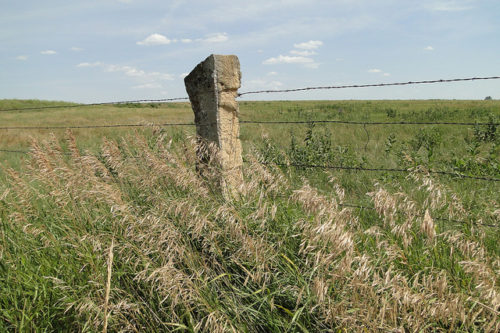
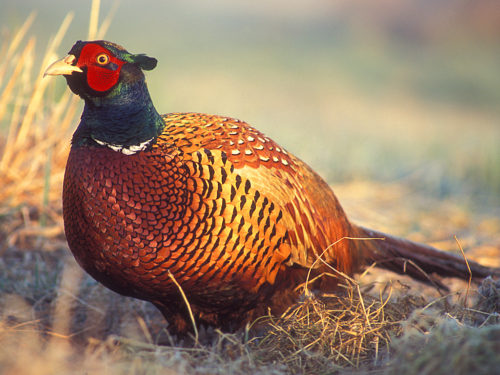
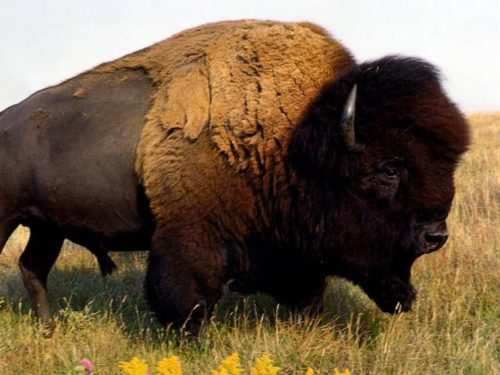


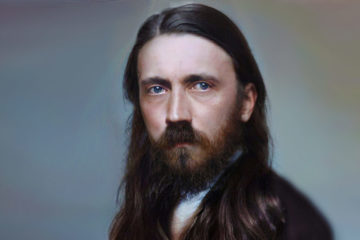
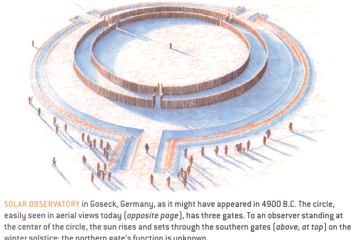
No need to be sorry, it’s a beautiful dream.
Indeed so. I was very moved by this story.